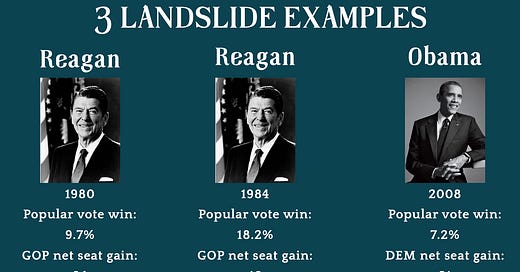Irrefutable Point V: The Shift of Power in the U.S. House Suggests a Trump Landslide
Topic: Elections
The Republican Party was formed on March 20, 1854, in Ripon, Wisconsin, as an abolitionist party opposing the spread of slavery to the western territories, and its existence in the states. The party was made up largely of former Whigs, who were likely unaware that the GOP of 150 years later would be infiltrated by pretenders who lacked the courage to stand up for anything of consequence.
The party first ran a presidential candidate in 1856, John C. Fremont, and won the White House in 1860 when Abraham Lincoln defeated three challengers. The GOP was not able to field an entire slate of U.S. House candidates to coincide with a presidential election until 1872, when Ulysses S. Grant won reelection in a blowout. The Republicans picked up a net gain of 61 seats while riding Grant’s coattails, and ever since then, a dominant re-election performance has resulted in a gain for the incumbent’s party on every occasion except one (Dwight D. Eisenhower’s 41-state victory in 1956).
Here are some examples of modern-day landslides, and the impact down-ticket into the U.S. House. The Republican gains are particularly impressive, because the GOP lacked a U.S. House majority from 1954 until 1994, when the “Contract with America” platform was championed.
Keep reading with a 7-day free trial
Subscribe to Captain K's Corner to keep reading this post and get 7 days of free access to the full post archives.




